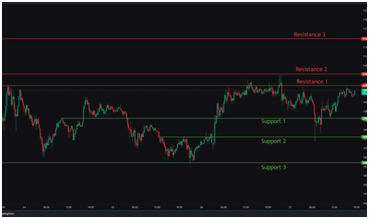Bitcoin has again been at the center of a global game of tug-of-war between economic optimism and geopolitics anxiety. After a short surge to above US$110,000, the cryptocurrency retreated and dropped to around US$107,800 as U.S.-China trade tensions took center stage again.
Although strong U.S. job growth initially pierced a wave of bullish sentiment, investors were far from slow to shift gears as new tariff threats reawakened broader market fears. The crypto market, long heralded for its independence, is now being quite clearly led by traditional economic metrics.
#Bitcoin drops to $107,800 as altcoins follow.
➤The pullback comes amid stronger-than-expected U.S. jobs data (147K vs 100K), which lowers the odds of a July Fed rate cut.
➤Trade tensions are also rising ahead of the July 7 tariff deadline, with key agreements still… pic.twitter.com/DMHVSx1okl
— CoinGPT (@CoinGPTbot) July 4, 2025
Jobs Boost Confidence—But Not for Long
The latest U.S. employment report showed that 147,000 jobs were added in June, a figure which proves the labor market remains robust even with monetary policy tightening. This optimism spilled over briefly to crypto markets as Bitcoin surged past a significant resistance level.
But that strength did not last long. Reports of possible new U.S. tariffs on Chinese tech imports soon spooked investors, prompting a risk-off trade that slammed stocks and cryptocurrencies in tandem.
The result? A precipitous retreat that erased Bitcoin’s gains for the day and established a more gloomy tone across the market.
Why Bitcoin Responds to Trade Politics
Though generally most effectively utilized as a hedge or store of value, short-term Bitcoin price action most frequently exhibits overall investor sentiment. When sentiment is positive, risk assets like crypto perform well. But if uncertainty grows—especially due to geopolitical threats—investors will decrease exposure to risk assets.
The latest trading news was a reminder that despite its origins in decentralised tech, Bitcoin remains fully at the mercy of the world’s financial mood. Tariff chatter may seem distant from blockchain, but it controls currency flows, investor confidence, and risk appetite—forces now dominating Bitcoin’s price action.
Also Read: Dormant Whale Spikes up Again After 14 Years, Moves 10,000 BTC
A Familiar Pattern: Macro Moves Driving Crypto
It is not new. Bitcoin price action has been following global macro events more and more in recent months. Central bank policy, inflation reports, and now trade tensions are all factors in the equation that crypto traders watch very closely.
The relationship to equity markets, never robust, is gaining strength. To institutional holders of Bitcoin as a diversified portfolio holding, it is there alongside equities, commodities, even currencies—in the sense that it reacts to the same stimuli.
What the Charts Say: Support, Resistance, and Choppy Waters
Technically, Bitcoin’s rejection at US$110K was anticipated. The level has been psychological resistance in recent weeks. US$107K is now being eyed as a support, while US$105K seems a potential downside buffer.
Volatility has risen, but not in blatant panic. The volumes remain large, and most long-term investors remain impervious to the intra-day trading. It is the short-term speculators who are making the running, particularly via algorithmic trading and derivatives.

Bitcoin stalls at $110K, holds $107K amid trader-driven swings ( Image Source: Trade Brains )
Broader Market Feels the Tremors
Bitcoin was not by itself in falling. Ethereum dropped to around US$5,860, and other tokens like Solana and XRP dropped by between 3% and 5%. Stablecoins did see a short-term spike in volumes as investors scrambled into digital cash equivalents like USDT and USDC.
The trend is obvious: when bad news knocks, the entire crypto system reacts—no matter the impetus originating from beyond the blockchain.
Market Experts: Bitcoin’s New Reality
As sums up market watcher Marla Jenks, the shift is underway—and there’s no going back.
“Bitcoin no longer exists in a vacuum. Economic news, political news, even trade policy—these now affect it. That’s what occurs when a niche asset goes mainstream.”
This is a sign of maturity in the market. The Bitcoin price is no longer dictated by sentiment within the crypto space but by macroeconomic forces outside as well.
What’s Next? Washington and Beijing in the Spotlight
The next two weeks should witness increased volatility. The Federal Reserve’s next policy signals, along with whatever official trade statements come out of the White House, are most likely to determine the course of direction not only for Bitcoin but for risk assets in general.
If China tensions continue to escalate, traders will probably seek safe havens, putting further pressure on Bitcoin. However, if negotiations de-escalate or still firming economic data continues to roll in, the recent pullback may yet turn out to be another buying opportunity.
Either way, Bitcoin watchers will have to look well outside of the crypto universe for the next major move.
Conclusion: The Macro Era of Crypto Is Here
Bitcoin’s recent retreat is more than a blip—it’s a sign of just how thoroughly baked the asset has become in the global economy. A few years ago, jobs reports or tariff announcements might not have made many ripples in the crypto world. Now they determine the direction of the digital asset class.
As Bitcoin makes the shift from cult asset to mass-market financial instrument, traders and investors must get up to speed on its new reality—a reality shaped as much by Washington and Wall Street as by blockchain technology and innovation.

